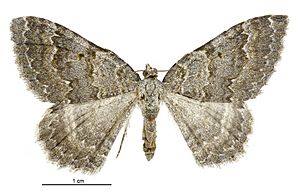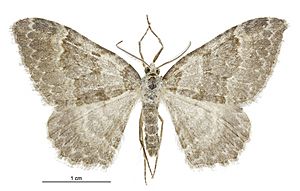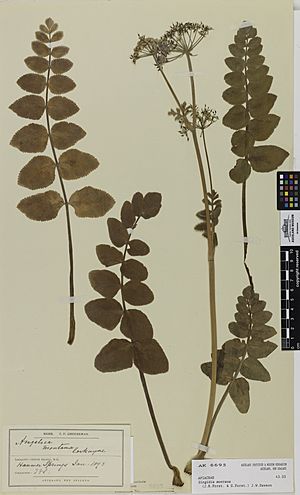Gingidiobora subobscurata facts for kids
Quick facts for kids Gingidiobora subobscurata |
|
|---|---|
 |
|
| Female | |
 |
|
| Male | |
| Scientific classification | |
| Genus: |
Gingidiobora
|
| Species: |
subobscurata
|
| Synonyms | |
|
|
The Gingidiobora subobscurata is a type of moth that belongs to the Crambidae family. This special moth can only be found in New Zealand, meaning it is endemic there. Because its numbers are going down, the Department of Conservation has listed it as "At Risk, Declining."
Contents
About This Moth's Name
This moth was first described in 1862 by a scientist named Francis Walker. He originally called it Scotosia subobscurata. Later, other scientists thought they had found new types of moths and gave them different names, like Cidaria ascotata and Larentia petropola.
Over time, scientists realized these were all the same moth. In 1927, Louis Beethoven Prout moved the moth into the Xanthorhoe group. Finally, in 1987, Robin C. Craw placed it in the Gingidiobora group. That's why its current scientific name is Gingidiobora subobscurata.
What the Moth Looks Like
The young moths, called larvae, are green and have smooth bodies.
Adult Gingidiobora subobscurata moths can have a slightly bluish color. They are about 39 millimeters (about 1.5 inches) wide when their wings are spread out. Their front wings are dark grey with tiny bluish-white speckles. They have faint, wavy lines and a small dark spot in the middle. The back wings look similar but are usually lighter and less clear.
Where the Moth Lives
The G. subobscurata moth is only found in New Zealand. It has been seen in places like Nelson, the Otira Gorge near Arthur's Pass, Queenstown, and at Bold Peak near Lake Wakatipu.
Life Cycle and Behavior
Adult moths are usually seen flying between January and March. They are quite rare and prefer to live in rocky areas that are about 600 meters (about 2,000 feet) or more above sea level.
Moth's Home and Food
This moth lives in the higher, wetter mountain areas of New Zealand's South Island. The larvae of the moth eat a specific plant called Gingidia montana, also known as mountain aniseed. Unfortunately, this plant is becoming less common because animals like to eat it.
Protecting the Moth
The G. subobscurata moth is currently listed as "At Risk, Declining" under the New Zealand Threat Classification System. This means its population is shrinking, and efforts are needed to help protect it.
Images for kids



